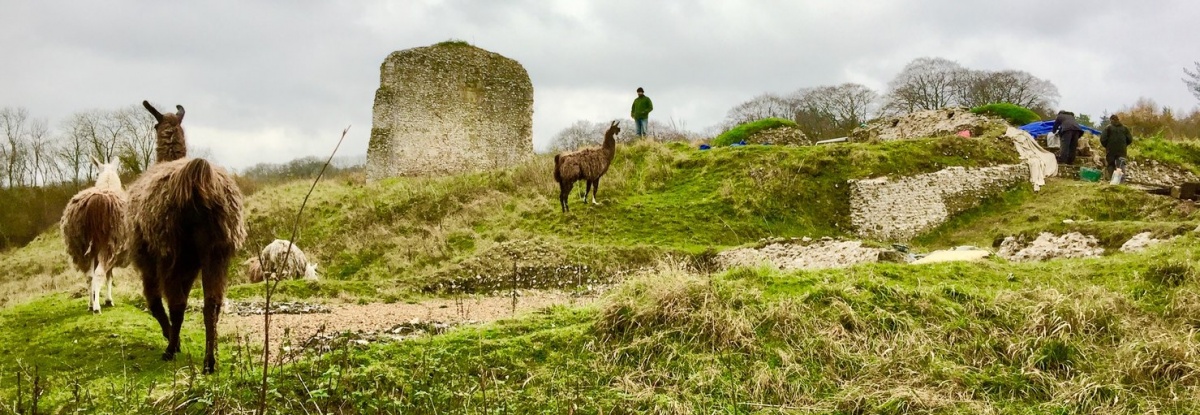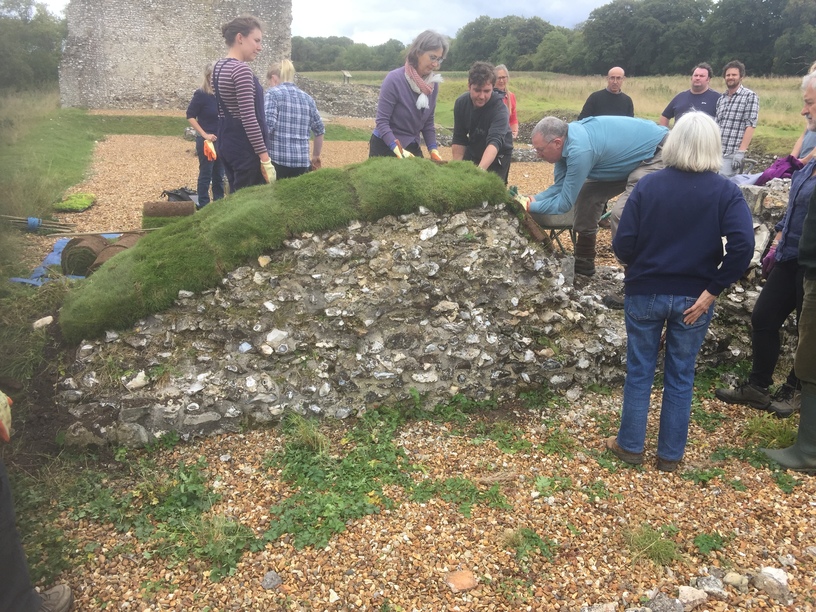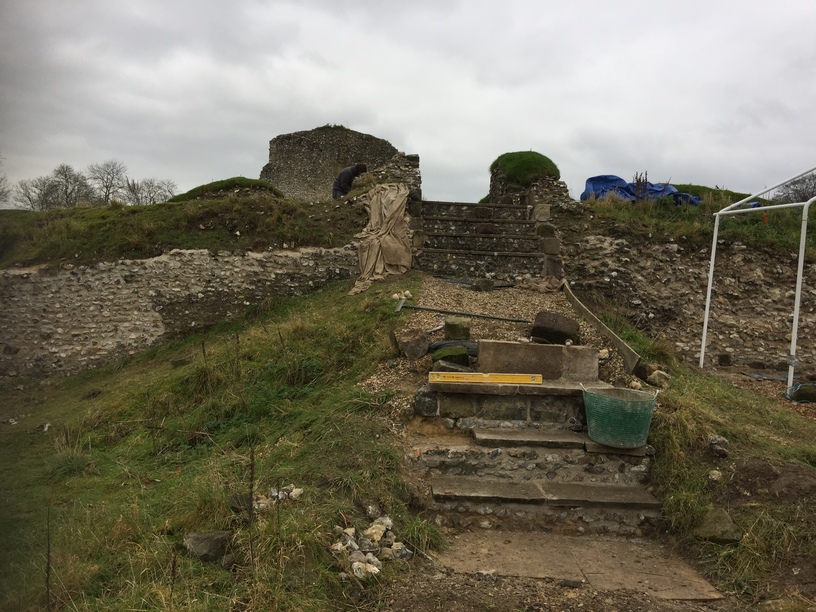Clarendon Palace, flint walling and plaster consolidation.
Dec 13, 2017
This winter we have been working to consolidate the vulnerable ruined landscape of the Clarendon Palace, nr Salisbury, Wiltshire. Although the conditions were particularly cold and harsh, our extensive lime mortar repairs and pointing suffered only minor failure. Turf cappings were introduced to protect the core of the flint walls and have proven to be an effective method of conserving the ruins.
The current custodians on a visit..

The Medieval manor and hunting lodge was established during C12 as a Royal Palace and expanded during early C13. It has an irregular layout of buildings arranged around a courtyard. In 1574 it was described as a simple hunting lodge. In that year, Queen Elizabeth visited the site, but the buildings were in such poor condition that she had to dine in a temporary "banquett house" The ruination has continued ever since. Today, what survives of the royal residence used by kings and queens from Henry I to Henry VI are extensive earthworks, flint walls, and the eastern wall of the Great Hall.
We have been working under the instruction of the Architect and SPAB Scholar Jo Hibbert to consolidate and rebuild the remaining flint and walls and the scraps of historic plaster that remain. The ruins will be completed with new turf cappings to the wall heads.
https://historicengland.org.uk/whats-new/in-your-a...
https://www.spab.org.uk/news/spab-scholars-conserv...

The hard capping (wall tops constructed from stone and mortar) had failed, so working with volunteers, SPAB Scholars and the projects funders (English heritage) a soft turf capping was introduced.

Consolidating flint walls.

It was really good to learn about the site from a fellow Antiquarian, Professor Tom Beaumont James FSA who had conducted excavations here in the 1980s.
